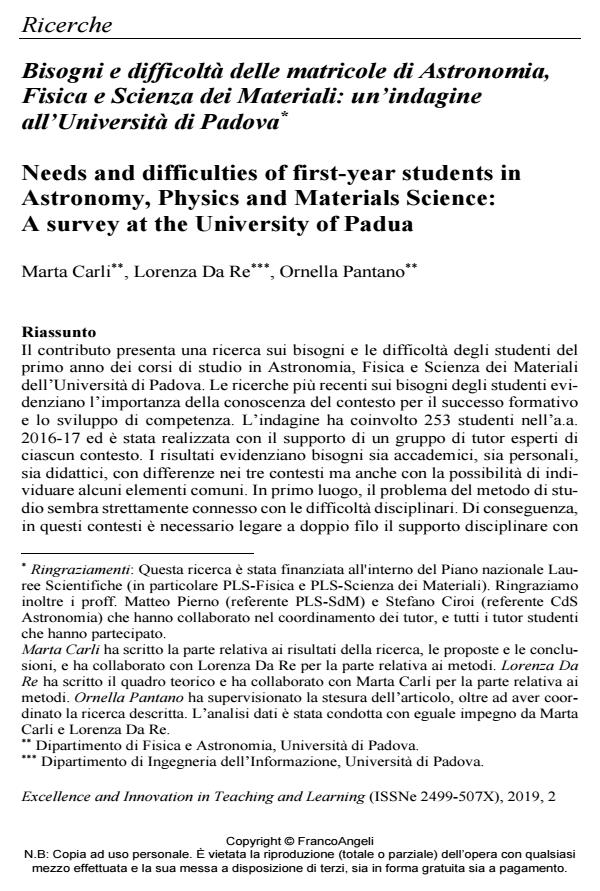Needs and difficulties of first-year students in Astronomy, Physics and Materials Science: A survey at the University of Padua
Journal title EXCELLENCE AND INNOVATION IN LEARNING AND TEACHING
Author/s Marta Carli, Lorenza Da Re, Ornella Pantano
Publishing Year 2019 Issue 2019/2
Language Italian Pages 20 P. 42-61 File size 227 KB
DOI 10.3280/EXI2019-002003
DOI is like a bar code for intellectual property: to have more infomation
click here
Below, you can see the article first page
If you want to buy this article in PDF format, you can do it, following the instructions to buy download credits

FrancoAngeli is member of Publishers International Linking Association, Inc (PILA), a not-for-profit association which run the CrossRef service enabling links to and from online scholarly content.
This paper presents a research on the needs and difficulties of students enrolled in the first year of the degree courses in Astronomy, Physics and Materials Science at the University of Padua. Recent research on the students’ needs highlights the importance of knowledge of the context for educational success and for the development of competence. The survey involved 253 students in the academic year 2016-17 and was carried out with the support of a group of tutors acting as the experts for each context. The results highlight both academic, personal and didactical needs, with differences in the three contexts, but also with the possibility of identifying some common elements. First, problems related to the method of study are closely intertwined to disciplinary difficulties. Consequently, discipline-specific support cannot be separated by formative/personal support in these contexts. Secondly, the theme of planning one’s own future also emerges, particularly in contexts characterised by interdisciplinarity or by weaknesses in initial or ongoing orientation. In the light of these results, we propose the design of context-specific actions. These actions should involve a collaboration of experts from different fields and should be shared with all the stakeholders.
Keywords: Higher education; Educational reform; Quality assurance; Learning management; Students’ needs; Science education.
Marta Carli, Lorenza Da Re, Ornella Pantano, Bisogni e difficoltà delle matricole di Astronomia, Fisica e Scienza dei Materiali: un’indagine all’Università di Padova in "EXCELLENCE AND INNOVATION IN LEARNING AND TEACHING" 2/2019, pp 42-61, DOI: 10.3280/EXI2019-002003